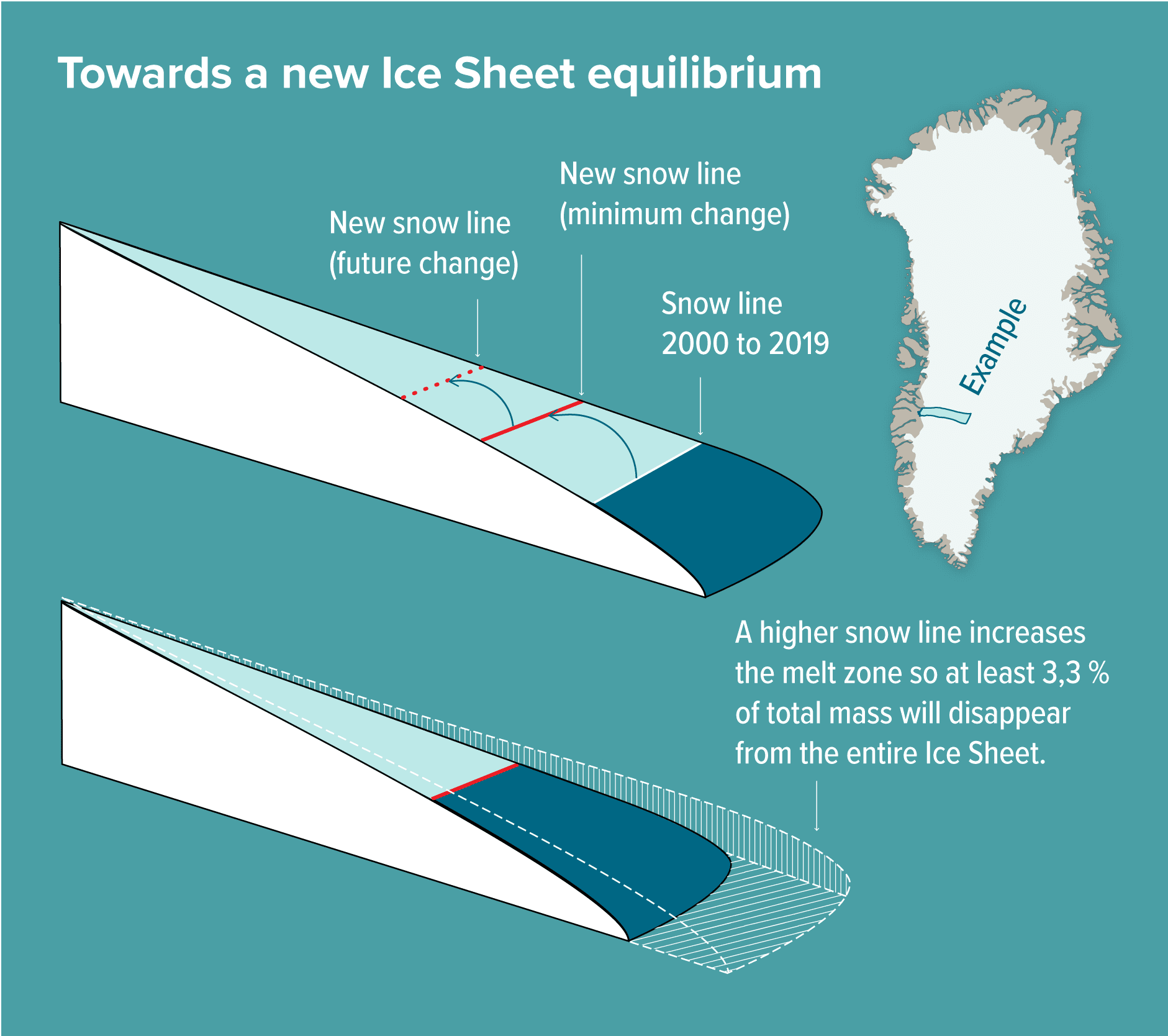One of the most dangerous aspects of climate change is that many of the effects are on delay, and will continue happening long after humans have stopped messing with the planetary thermostat. Estimates of the already locked-in consequences are usually quite imprecise, but new work claims to address that for one important measure: the amount of ice Greenland will lose because of the warming that has already occurred.
Published in Nature Climate Change, a team led by Professor Jason Box has calculated that 110 trillion tonnes of Greenland’s ice is destined to melt and flow to the sea – even if warming stopped at its current level. Quite simply, summers have become too warm for much of the ice around the enormous island’s periphery; Not enough new snow is being deposited to replace what is being lost.
This will continue even if fossil fuel emissions and other human-induced sources of greenhouse gas stopped tomorrow. Since that won’t happen, the actual melting will be a lot higher. “It is a very conservative rock-bottom minimum. Realistically, we will see this figure more than double within this century,” Box, of the National Geological Survey of Denmark and Greenland, said in a statement.
Few human brains are suited to envisaging 110 trillion tonnes of anything. Consequently, the study authors have put it into context by explaining it’s enough frozen water to raise the level of the oceans by 27.4 centimeters, or most of a foot. That may not seem too terrifying until you remember this is all from just one island. The West Antarctic ice sheet is almost as large as Greenland’s, while the East Antarctic counterpart contains seven as much ice, although there are hopes it will prove more stable than the other two.
“In the foreseeable scenario that global warming will only continue, the contribution of the Greenland Ice Sheet to sea level rise will only continue increasing. When we take the extreme melt year 2012 and take it as a hypothetical average constant climate later this century, the committed mass loss from the Greenland Ice Sheet more than doubles to 78 cm,” Box added.
Meanwhile, plenty of mountain ranges are also losing snow, on top of the rise produced by thermal expansion of the water that is already in the ocean. All this means many low-lying areas, including some entire cities, are effectively doomed already.
Far more territory, however, would survive rises or a meter or two largely unscathed – but not the much greater threat posed by unchecked emissions.

To determine the locked in Greenland ice melt, the authors measured the snow line in sample areas and the line below which snow is already melting so that exposed ice will eventually be lost. Image Credit: The Geological Survey of Denmark and Greenland, GEUS
Long-term predictions always contain some uncertainty, but the authors point out that their work has much narrower error bars than previous methods. They’re not relying on climate models, but instead using observations from satellites and teams on the ground to establish the gains and losses that make up the ice budget for each of Greenland’s regions every year for the last two decades.
The team calculated the highest altitude line where melting would occur if the system was in balance. The area above this, where melting is occurring, makes up 3.3 percent of Greenland’s total snowpack. All of this is destined to be lost unless temperatures suddenly fall. The vulnerable zone is concentrated in the south-west.
Box is very confident in the minimum quantity of ice that will melt, but acknowledges the method used does nothing to establish the period over which the melting will occur. Nevertheless, he says; “Our observations suggest that most of the committed sea level rise will occur this century.”
Box has achieved some fame for his pithy summation of the consequences of seafloor frozen methane melting. He is also among the most cited scientists of the last decade.
Source Link: Greenland's Melting Ice Has Locked In 27 Centimeters Of Sea Level Rise Already